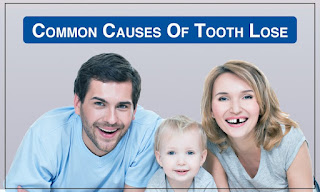Cavity & Tooth Decay: Symptoms, Causes, Risks and Treatment
The Cavity or Dental Decay-An Overview
A hole that forms in the tooth when the acids present in the mouth wear down or erodes the enamel is called a Cavity.
Starting as a small hole, a cavity increases in size over some time when left untreated and can cause toothaches, infection, and even extractions.
Cavities are generally painless at the beginning and thus they can go undiagnosed till they become worse.
Cavities are one of the most common chronic diseases affecting all ages and can be prevented by proper brushing, flossing, and regular dental cleanings.
Who Can Get a Cavity?
Though more common in children because of improper brushing and consumption of sugary foods, people of any age can get cavities and tooth decay.
However, cavities are quite common in adults also, and sometimes, new decay may develop around the peripheries of cavities that were treated in childhood.
Adults are more prone to receding gums, a condition that exposes the lower parts of teeth to plaque that can be cavity-causing.
What are the Causes of the Dental Decay or Cavities?
The hard, protective coating on the teeth that protects against tooth decay is known as Enamel.
The softening and weakening of the enamel and dentine tooth due to an acid attack after eating or drinking anything containing sugar can start dental decay. These acids can form a cavity in the tooth over time.
The Bacteria in your mouth feed and thrive on sugary, starchy foods and drinks in the process of converting their carbohydrates into acids. A sticky coating called Plaque forms on the teeth.
Plaque is a combination of :
- Bacteria
- Acid
- Food
- Saliva
Lack of adequate brushing and flossing leads to the acids in plaque eroding the tooth enamel resulting in cavities.
Who is at Risk of Cavities?
Cavities can happen to anyone. However, some people are at a higher risk. Risk factors for cavities include:
- Consumption of too much of sugary or acidic foods & drinks
- Poor oral hygiene routine for example lack of brushing and flossing daily.
- Fluoride deficiency
- Dry mouth
- Eating disorders, like anorexia and bulimia
- Acid reflux disease, which can cause the stomach acid to wear down your tooth enamel
- Ailments like Sjogren’s syndrome or taking medications like antidepressants can cause dry mouth leading to cavities
- Radiation therapy of the head and neck area
The dental specialists at Morgan Hill Dentistry explain that the back teeth are more prone to cavities as these teeth have grooves and spaces that can trap food particles. Also, these teeth are harder to reach and thus neglected while brushing and flossing.



.jpeg)
Comments
Post a Comment